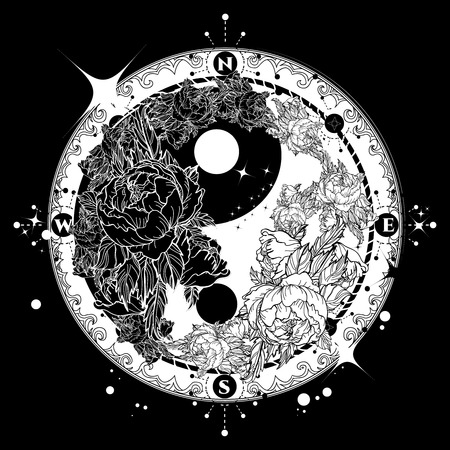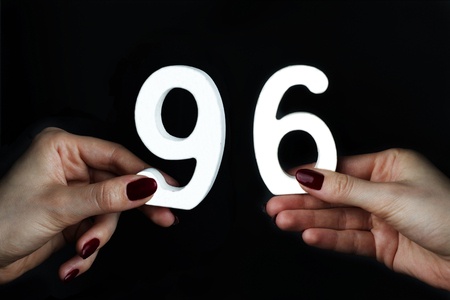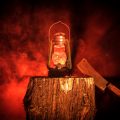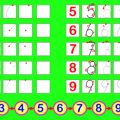Introduction to Crystal Balls in English Tradition
The crystal ball, a symbol steeped in mystique and intrigue, occupies a unique space within the tapestry of English folklore and myth. For centuries, these shimmering orbs have captured the imagination of storytellers, fortune-tellers, and curious minds alike. Often associated with the art of prophecy and divination, crystal balls have become icons of both supernatural wisdom and enchanting spectacle. Their presence in English tradition is more than mere ornamentation; it reflects a deep-rooted fascination with the unknown, and an enduring belief that hidden truths might be glimpsed through their depths. From shadowy corners of rural fairs to the drawing rooms of Victorian spiritualists, crystal balls have woven themselves into the cultural fabric of England, serving as gateways between the mundane and the magical. As we delve into their role across folklore and legend, we uncover not only tales of seers and sages but also broader questions about fate, knowledge, and the human desire to peer beyond the veil.
2. Historical Roots and Cultural Origins
To truly grasp the place of crystal balls in English folklore and myth, we must journey back to the mists of Britain’s ancient past. Far from being a modern invention or mere theatrical prop, the crystal ball—often called a “scrying glass” in olden times—emerges from a tangled web of Celtic spirituality, Druidic ritual, and the superstitions that coloured early English life.
Celtic Practices: The Seeds of Scrying
The Celts, whose influence extended across much of pre-Roman Britain, were deeply attuned to the natural world and its mysteries. They believed that certain objects, especially those with reflective qualities like pools of water or polished stones, could act as portals to other realms. This practice, known as scrying, laid the foundation for the later use of crystal balls as tools for divination.
Druid Traditions: Guardians of Ancient Wisdom
Druids—the learned priestly class among the Celts—were reputed to wield considerable knowledge of prophecy and spiritual insight. While historical evidence is fragmentary, oral tradition holds that Druids used various forms of “seeing” stones or crystals during their rituals. These objects were thought to channel energies or connect users with ancestral spirits, reinforcing the crystal ball’s status as more than just an ornament but as a conduit for wisdom.
Early English Superstitions and Adaptations
With the arrival of Christianity and subsequent societal shifts, many pagan customs blended into local folklore rather than disappearing entirely. Early English villagers often retained a belief in omens and portents, repurposing crystal balls within a Christianised framework—as tools for seeking guidance or protection against evil. Over time, these beliefs became woven into everyday superstition, surviving alongside tales of witches and cunning folk who employed such items for both benevolent and nefarious ends.
A Comparative Glance: Origins at a Glance
| Tradition | Role of Crystal Ball | Associated Beliefs |
|---|---|---|
| Celtic | Scrying via reflective surfaces | Accessing hidden knowledge; spirit communication |
| Druidic | Ritual use in ceremonies | Connection with ancestors; prophecy; wisdom gathering |
| Early English Folk | Superstitious tool for guidance and protection | Divination; warding off evil; insight into fate |
This rich tapestry of influences reveals that the crystal ball is not simply a curiosity borrowed from elsewhere but a potent emblem shaped by centuries of British cultural innovation. Its enduring mystique reflects deep-seated traditions that continue to ripple through English storytelling even today.

3. Crystal Balls in English Legends and Literature
To truly grasp the cultural gravitas of crystal balls within English folklore and myth, we must journey into the heart of classic stories and enduring legends. The Arthurian cycle offers perhaps the most evocative references, where seers and magicians, most notably Merlin, are often associated with mysterious artefacts that provide glimpses into fate’s winding paths. While not always named explicitly as “crystal balls,” these orbs—sometimes described as scrying stones or enchanted globes—embody the archetype of magical vision and prophecy. Such imagery has become woven into the tapestry of English storytelling, transforming the crystal ball from a mere object to a potent literary symbol.
Beyond Arthurian mythos, crystal balls make striking appearances in later English literature. In Shakespeare’s works, for instance, although direct mentions are rare, the motif of seeing beyond the present—whether through witches’ cauldrons or ominous apparitions—echoes the allure of crystal gazing. Victorian writers like Charles Dickens and Wilkie Collins capitalised on this mystical heritage, peppering their tales with fortune-tellers whose fortunes and warnings often hinge upon these shimmering orbs. The crystal ball thus becomes not only an instrument of foresight but also a mirror for society’s anxieties and hopes during times of rapid change.
In modern British culture, references to crystal balls persist in everything from pantomimes to detective fiction. They serve as narrative devices that blur the lines between fate and free will, inviting readers to ponder whether destiny is written in stone—or revealed in glass. This enduring presence attests to the fascination held by generations with objects that promise secret knowledge. Ultimately, it is through these recurring appearances across genres and centuries that the crystal ball has cemented its status as an icon of mystery in England’s literary imagination.
4. Fortune Telling and the English Seer
The art of fortune telling, or ‘scrying’ as it is known in traditional English parlance, has long held a peculiar yet enduring place within English folklore. The figure of the English seer—often depicted as a wise woman or cunning man—would use various tools to divine the future, but none became more iconic than the crystal ball. Unlike other European traditions where tarot cards or tea leaves might take centre stage, the crystal ball quickly emerged as a quintessential symbol at English fairs, bustling markets, and in tales spun across the countryside.
The Evolution of Scrying in England
Scrying, derived from the Old English word ‘descry’ meaning to reveal, was initially practised with natural surfaces like water or polished stones. Over time, however, the allure of the crystal ball grew—not just for its mystical properties, but also for its theatrical appeal in public gatherings. This shift reflects an intriguing intersection between genuine belief and popular entertainment.
The Crystal Ball at Fairs and Markets
By the Victorian era, no village fair was complete without a fortune teller’s tent. Here’s how the role of the crystal ball evolved within these community settings:
| Setting | Role of Crystal Ball | Public Perception |
|---|---|---|
| Fairs & Carnivals | Central prop for performances; focal point of curiosity | Sceptical amusement mixed with superstition |
| Marketplaces | Portable tool for itinerant seers; signifier of mystical authority | Seen as both a novelty and a warning against meddling with fate |
| Countryside Gatherings | Used in private readings; linked to local legends and folk cures | Regarded with awe and sometimes trepidation |
Shaping Folklore and Everyday Life
The presence of the crystal ball in these communal spaces helped cement its reputation not only as a tool of divination but also as a powerful cultural motif. Tales abound of predictions both marvellous and mundane: from glimpses of lost livestock to warnings about wayward lovers. The English seer—equal parts performer and confidant—became woven into the fabric of rural life, their crystal balls shimmering with possibilities both real and imagined.
5. Modern Perceptions and Continued Allure
The crystal ball, once the preserve of mediaeval soothsayers and wise women, has made a fascinating journey into modern British culture. Its image has shifted from an object of reverence to one often tinged with humour, scepticism, and even affection. Stereotypes abound: the fortune-teller in her velvet-draped parlour, peering mysteriously into swirling mists, is as much a staple of pantomime and Halloween parties as it is of Gothic novels. Yet, beneath this veneer of satire, the allure of the crystal ball endures—perhaps because uncertainty and curiosity remain so central to human experience.
In contemporary Britain, crystal balls frequently appear in popular media: television shows, films, and books often use them as shorthand for mystical insight or comic misunderstanding. From characters like Professor Trelawney in the Harry Potter series to lampooned psychic hotlines advertised late at night, these glass spheres persist as potent cultural symbols. Their presence signals both our scepticism about supernatural claims and a lingering desire to glimpse beyond the mundane.
Yet their role isn’t confined to fiction. Many Britons still consult crystal balls during psychic readings at festivals, fairs, or even online. The act may be playful or deeply felt; either way, it reflects an ongoing fascination with fate and fortune. A surprising number keep small crystal balls at home—not just for ornamentation but as talismans against bad luck or as focal points for meditation. This blend of tradition and modernity speaks volumes about how English folklore adapts while retaining its core themes.
Furthermore, the crystal ball’s enduring appeal lies in its ambiguity. It invites us to project our hopes and fears onto its surface—a blank canvas for personal myth-making. Whether taken seriously or with a pinch of salt, these spheres serve as reminders that folklore is not static but constantly evolving. They bridge the gap between past beliefs and present-day habits, quietly shaping how we imagine possibility and destiny in everyday life.
6. Symbolism and Social Impact
The crystal ball, shimmering at the heart of English folklore, functions as more than a mere tool for fortune-telling; it is a cultural symbol, deeply woven into the fabric of collective imagination. Its allure lies in what it suggests about English attitudes towards fate, destiny, and the unseen forces shaping everyday life. The object’s enduring presence in stories and local legends reveals an ongoing fascination with the unknown—a desire to peer beyond the veil separating the mundane from the magical.
The Crystal Ball as a Mirror of Fate
Within English myth, crystal balls are often depicted as gateways to possible futures or hidden truths. They encapsulate the tension between free will and predestination—a theme that resonates throughout British literature and oral tradition. In village tales, the seer’s pronouncements are both feared and revered, reflecting a cultural ambivalence: does one’s fate lie written in stone, or can it be bent by knowledge and action? The crystal ball thus becomes an emblem of hope and anxiety, offering glimpses of what might be while reminding us of our limitations.
Destiny, Doubt, and Everyday Life
Beyond their mystical associations, crystal balls have also shaped social dynamics within communities. Those who claimed to wield their power—fortune tellers, wise women, cunning folk—often occupied ambiguous positions: trusted advisors to some, objects of suspicion to others. This duality mirrors broader English attitudes toward the supernatural: a blend of scepticism and curiosity that persists even today. The symbolic resonance of the crystal ball continues in modern Britain, where references abound in everything from pub signs to popular media.
A Symbol That Endures
In sum, the role of crystal balls in English folklore goes far beyond simple superstition. They serve as powerful symbols of uncertainty and possibility, expressing deep-seated beliefs about destiny’s role in our lives. As icons of prophecy and mystery, they invite us to reflect on how we understand our place in a world where chance and choice intertwine—reminding us that, even now, the future remains tantalisingly just out of reach.


